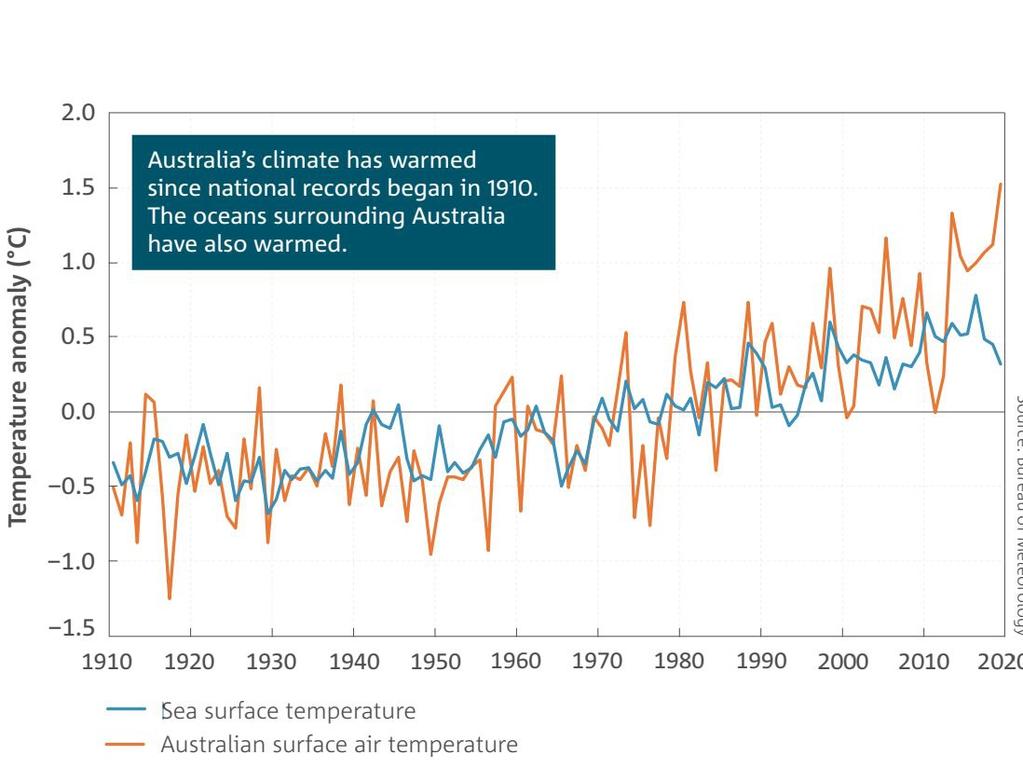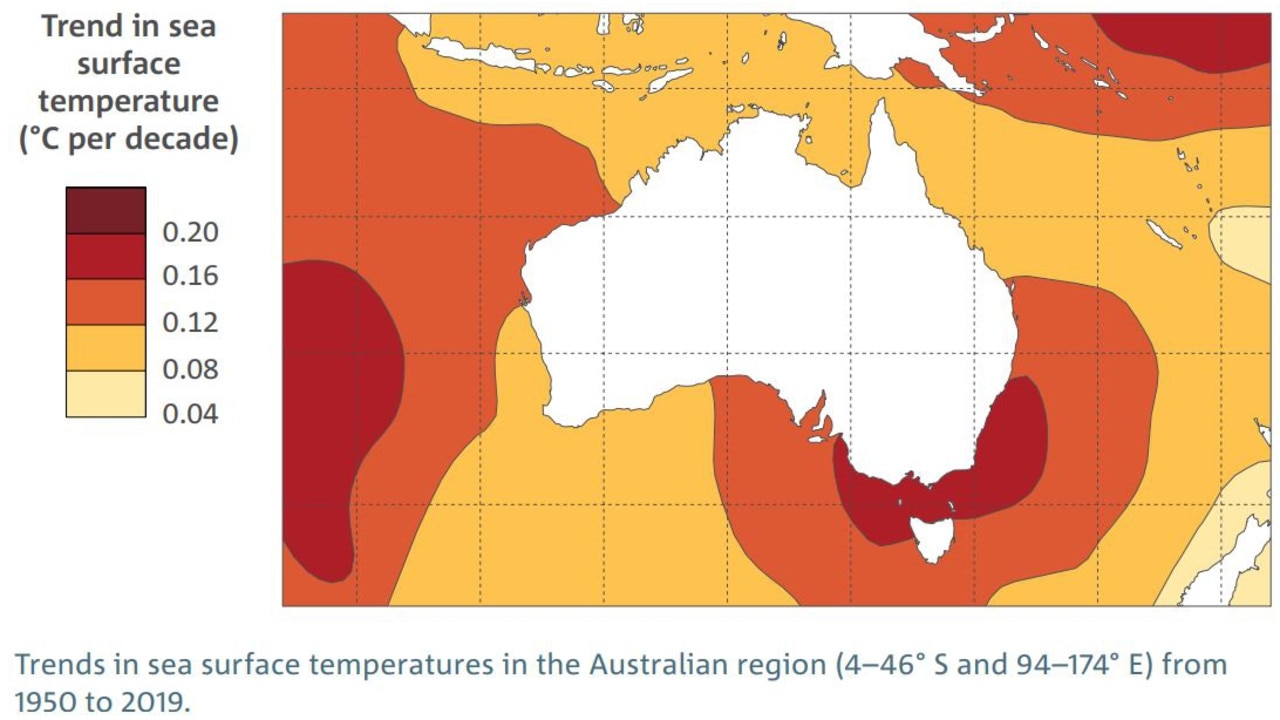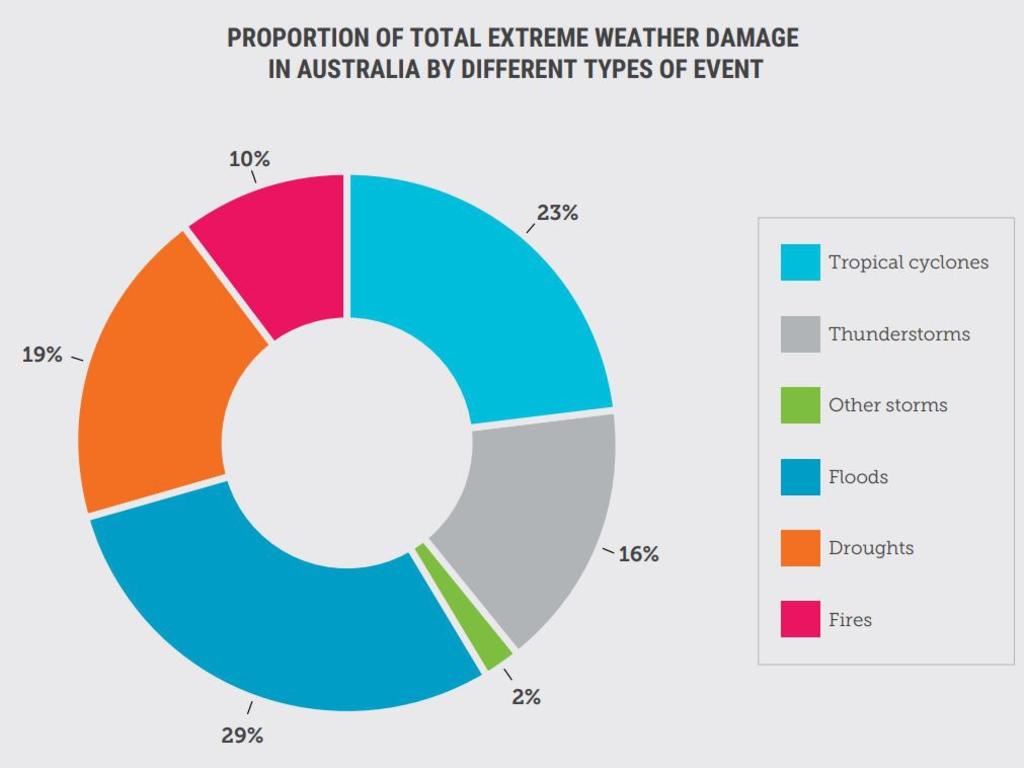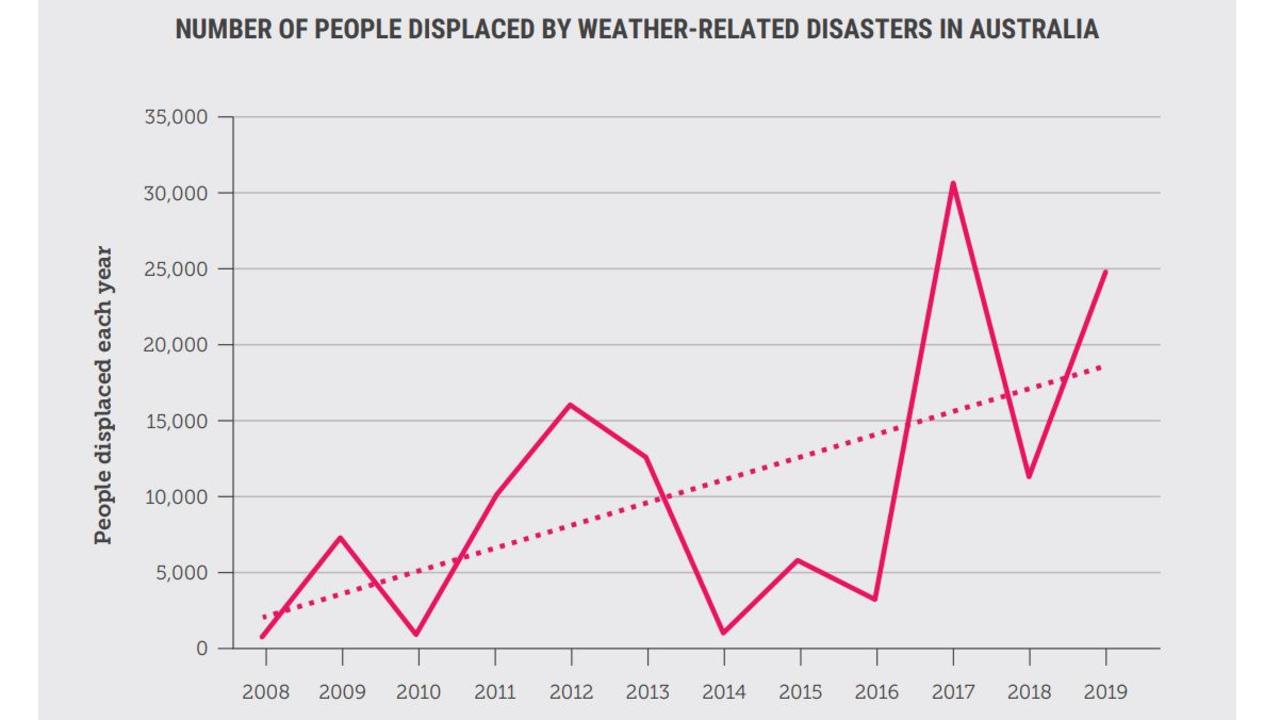Concern over Australia’s massive rain event occurring during relatively weak La Nina
Australia’s epic floods shouldn’t have been this big, given the La Nina is relatively weak. But a worrying factor may have tipped the scales.
If you’d asked a cross-section of Australian meteorologists back in September for their predictions as to how the then just declared La Nina might affect our weather, they would have told you it would be wetter.
But not this wet.
A one-in-100-year multistate rain event leading to deadly floods across the east coast was simply not on the weather dance card for this year.
This La Nina was meant to be nothing special. And yet, on its watch, floods comparable to huge deluges from decades past have occurred.
Climate watchers have said the recent weather event was “unusual”.
But climate change is likely to mean it won’t be the last such rain event or curiously strong climate driver.
“This rain event was beyond what we were expecting,” Dr Ailie Gallant from the Monash University Climate Change Communication Research Hub told news.com.au.
“10 years ago, in 2011, was a very strong La Nina. But this La Nina was very middle of the road, it wasn’t super weak or super strong.”

Two people have now died after rivers swelled from the Gold Coast to the New South Wales south coast. Sydney suburbs were inundated while flooding in the interior may take months to clear.
Some areas of the NSW mid north coast saw more than a metre of rain in one week.
“The NSW coast is no stranger to extreme rainfall – there have been five events in the past decade with daily totals exceeding 400mm,” said Australian National University climate scientist Joelle Gergis.
“However, the current event is unusual because of its duration and geographic extent.”
In a piece for website The Conversation, Dr Gergis said the figures were not yet in – as the La Nina is still taking place – but it was likely to show unexpectedly large amounts of rainfall fell on Australia during La Nina’s visit.
“What’s interesting about the 2020–2021 La Nina is that it was weak compared with historical events.
“However, it’s concerning that this weak La Nina caused flooding comparable to the iconic floods of the 1950s and 1970s.”

NEW FACTOR WORRYING SCIENTISTS
Dr Gallant said an active La Nina can increase rainfall variability by 30 per cent.
“Whenever we talk about La Nina and seasonal forecasting all we can really say is its likely to be wetter and there is a high risk of very heavy rainfall events.
“La Nina tips the scales but it’s down to individual weather systems and climate factors.”
One of those factors that may have turbocharged this year’s relatively moderate La Nina is rising sea surface temperatures, often cited as a symptom of climate change.
The Bureau of Meteorology has said average sea surface temperatures around Australia have risen by 1C since 1900, with eight of the 10 warmest years on record occurring since 2010. Seas have got particularly warmer off the coast of southern Queensland and NSW.
An analysis of the devastating 2011 Queensland floods found the waters off the coast at or near record temperatures.

Warmer water evaporates and heads into the atmosphere.
“A warmer atmosphere can hold more water vapour and scientists calculate that this can increase moisture in the atmosphere by approximately 7 per cent per degree of global warming,” said Dr Gallant.
The atmosphere holds onto this extra moisture until, eventually, it bursts sending vast amounts of moisture earth bound. If that happens over land, flash flooding is a possibility.
This can mean that despite global warming causing overall less rainfall, what rainfall there is can come down far more ferociously in shorter, heavier and more damaging episodes. Not unlike the last week.

INTENSE RAIN EVENTS MORE FREQUENT
Fast moving bushfires might seem more threatening than slow moving floods, but the latter are more destructive.
On the whole, floods kill far more Australians than bushfires.
According to a report by the Climate Council, an organisation that publishes research on climate change, bushfires account for 10 per cent of all the damage in Australia caused in extreme weather events. Yet, floods cause three times the damage – more than any other single weather type.
The Climate Council has said that in recent decades the number of short duration extreme rainfall events has increased by around 10 per cent.

“The intense rainfall and floods that have devastated NSW communities are taking place in an atmosphere made warmer and wetter by climate change,” said Climate Council spokesman Professor Will Steffen.
“For many communities dealing with floods right now, this is the latest in a line of climate change-exacerbated extreme weather events they have faced, including drought, the Black Summer bushfires, and scorching heatwaves.”
The concern is there is room for things to get much worse.

‘SOBERING’ THAT FLOODS CAN GET FAR WORSE
Dr Gergis said as high as the waters have got around the Hawkesbury-Nepean system in Sydney, peaking above 13 metres near Windsor on March 23, in the past it has risen even higher – to almost 20 metres at one point.
Climate change could exacerbate future La Ninas, even mild ones, leading to even more destruction.
“It’s sobering to think the Hawkesbury River once peaked 6 metres higher than what we’re seeing right now. Imagine the potential future flooding caused by an east coast low during strong La Nina conditions,” Dr Gergis said.
Climate scientists point out that a number of factors go into extreme weather events, some quite random, and you can’t blame last week’s floods solely on climate change.
Indeed, analysis has only just begun on the 2020-21 La Nina and its effects.
But extreme rainfall events are increasing in Australia and are likely to only get stronger, particularly in La Nina years.

As for the current La Nina – it’s on the way out faster than you may think. Last week’s rain may have been its parting performance.
The climate driver is most powerful over summer and decays during autumn.
“It tends to break down quite quickly in April,” said Dr Gallant.
“By the start of May, the influence of this La Nina should be pretty much gone.”
The influence of climate change on Australia’s extreme weather events may linger, however.




